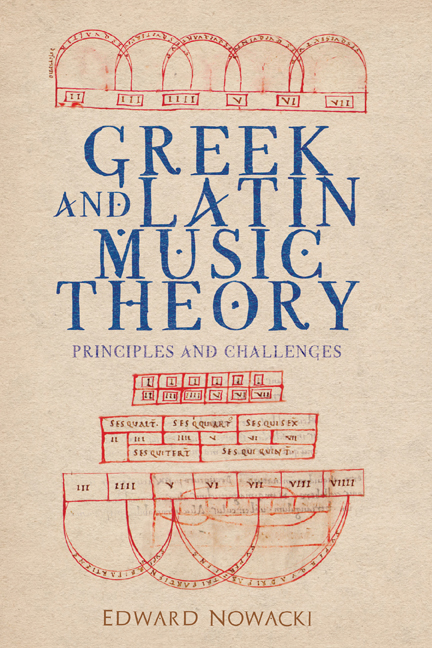10 - Transposition and the Doctrine of Modal Affinity
Published online by Cambridge University Press: 14 August 2020
Summary
This essay has two purposes. The first is to acquaint students of music theory with the practice, well known to chant scholars and church musicians, of notating certain Gregorian chants in transposition, permitting them to end on notes other than the familiar four finals, D, E, F, and G. The second purpose is to remedy a certain confusion involving the medieval doctrine of transposition and its relation to a more recent doctrine of transposition that became current in the sixteenth century.
Of course, it must be stated at the outset that the Middle Ages neither practiced nor knew any concept of absolute pitch. To sing in a particular mode was simply to realize a certain intervallic structure. This is no different from modern domestic music making without instrumental accompaniment. “Happy Birthday” may be in the major mode, but no one expects it to sound in a particular key. One simply sings it in a comfortable vocal range. That is exactly how singers sang plainchant. Whether a chant of the Dorian mode is notated on D or on a carries absolutely no implications for the highness or lowness of the pitch. (The very notion of absolute pitch in any era, even by the roughest of measures, is inconceivable without the standardized manufacture of musical instruments, a circumstance that was barely known in the West before the sixteenth century.)
According to the medieval doctrine, all chants can be transposed to their mode's affinis, also known as the socialis, affinalis, compar, consimilis, and—since the thirteenth century—the confinalis. The affinis, or kindred note, of any mode is the note in the tetrachord of the superiores (a–♮–c–d) that occupies the same relative position that the final occupies in the tetrachord of finals (D–E–F–G). Fundamental to this doctrine is the fact that all tetrachords have the same intervallic structure: tone-semitone-tone (hereafter, TST). When a chant's final is moved to the comparable place in the higher tetrachord, it retains its original intervallic environment within the bounds of the tetrachord and, consequently, its original modal quality. In fact, the names of the four modal qualities—protus, deuterus, tritus, tetrardus (first, second, third, fourth in Latinized Greek)— are simply the names of the four positions within any TST tetrachord.
- Type
- Chapter
- Information
- Greek and Latin Music TheoryPrinciples and Challenges, pp. 85 - 91Publisher: Boydell & BrewerPrint publication year: 2020

